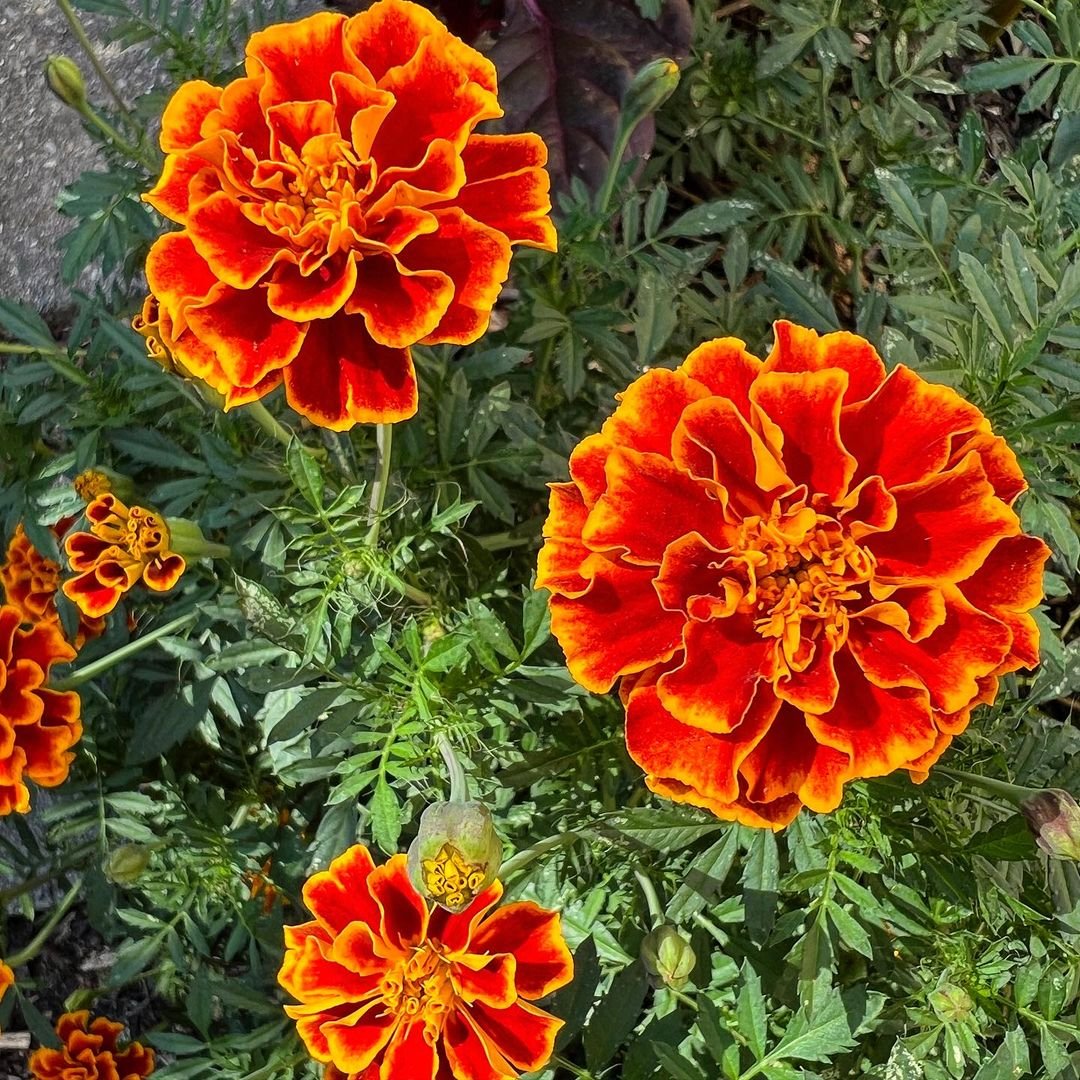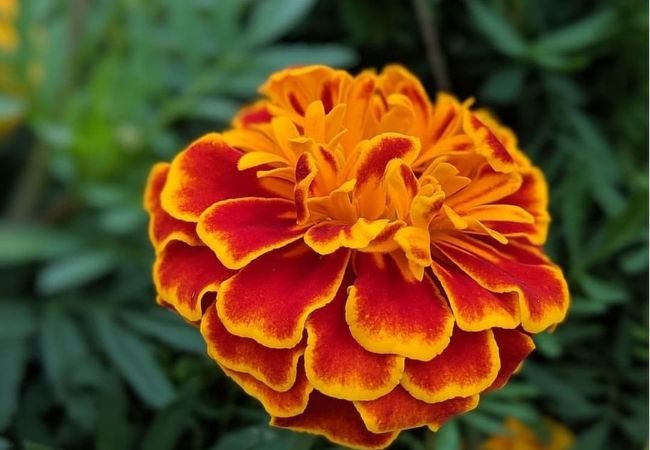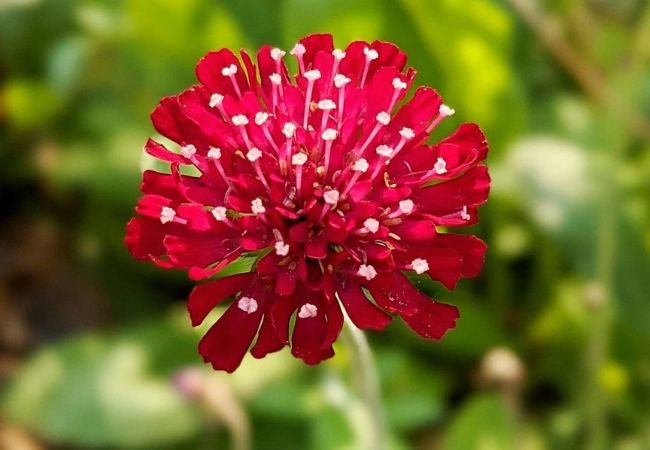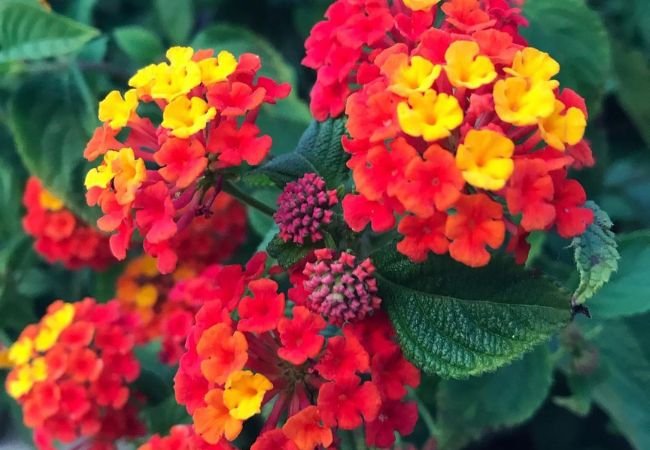Discover the beauty and benefits of Marigolds! Learn how to grow these cheerful flowers, their various types and why they’re a must-have for any garden. Perfect for beginners and experienced gardeners alike.
When you think of sunny, cheerful flowers, marigolds probably come to mind. These bright blooms are popular in gardens across the USA. They’re easy to grow and add a pop of color to any outdoor space. Let’s dive into the world of marigolds!
Here’s a detailed chart for Marigold flowers:
| Category | Information |
|---|---|
| Botanical name | Tagetes spp. |
| Common name | Marigold |
| Plant type | Annual or perennial |
| Hardiness zone | Zones 2-11 (depends on species) |
| Sun exposure | Full sun |
| Soil type | Well-drained, fertile soil |
| Watering | Moderate watering |
| Growth habit | Bushy, compact |
| Height/Spread | 6 inches to 3 feet tall, depending on species |
| Special features | Daisy-like flowers in shades of yellow, orange and red; aromatic foliage, pest-repellent properties, attracts beneficial insects |
What Are Marigolds?

Marigolds are annual flowers that come in shades of yellow, orange and red. They’re known for their round, puffy blooms and strong scent. Marigolds are part of the sunflower family and are native to the Americas.
Types of Marigolds
There are several types of marigolds you can grow:
- African Marigolds: These have large, round flowers and can grow quite tall.
- French Marigolds: Smaller plants with more varied flower shapes.
- Signet Marigolds: These have tiny, single flowers and delicate foliage.
- Triploid Marigolds: A mix between French and African marigolds.
For more details on marigold varieties, check out the University of Minnesota Extension website.
How to Grow Marigolds
Growing marigolds is pretty straightforward:
- Sunlight: They love full sun, at least 6 hours a day.
- Soil: They’re not picky but prefer well-draining soil.
- Planting: Sow seeds directly in the garden after the last frost, or start indoors 6-8 weeks before.
- Water: Keep the soil moist but not soggy.
- Spacing: Plant them 6-18 inches apart, depending on the variety.
The National Gardening Association offers more in-depth planting tips.
Caring for Your Marigolds
Marigolds are low-maintenance, but here are some care tips:
- Deadhead spent blooms to encourage more flowers.
- Water at the base of the plant to avoid wetting the leaves.
- Fertilize lightly if needed, but don’t overdo it.
- Watch for pests like aphids or spider mites.
For pest control information, visit the University of California IPM website.
Benefits of Marigolds
Marigolds aren’t just pretty; they’re useful too:
- They can help repel some garden pests.
- They attract beneficial insects like butterflies.
- Some people use them in cooking or as a natural dye.
- They make great cut flowers for bouquets.
The United States Department of Agriculture has more info on marigolds’ pest-repelling properties.
Marigolds in Companion Planting
Marigolds are often used in companion planting:
- Plant them near tomatoes to help deter pests.
- They can help protect beans from Mexican bean beetles.
- Some gardeners believe they improve the growth of basil.
Common Problems and Solutions
While marigolds are generally hardy, they can face some issues:
- Powdery mildew: Improve air circulation and avoid overhead watering.
- Root rot: Ensure good drainage and don’t overwater.
- Leaf spot: Remove affected leaves and avoid getting water on the foliage.
For more on plant diseases, check the American Phytopathological Society website.
Marigolds are a fantastic choice for adding bright colors to your garden. They’re easy to grow, have many benefits and bloom all summer long. Whether you’re new to gardening or have years of experience, marigolds are sure to bring joy to your outdoor space.
Why not plant some marigolds this season? Their cheery blooms and easy care make them perfect for any garden. For more gardening advice, visit the National Garden Bureau website. Happy gardening!
For more gardening tips and plant care guides, visit usagardenhub.com.







8 Comments on “Marigolds : Bright and Easy Garden Favorites”